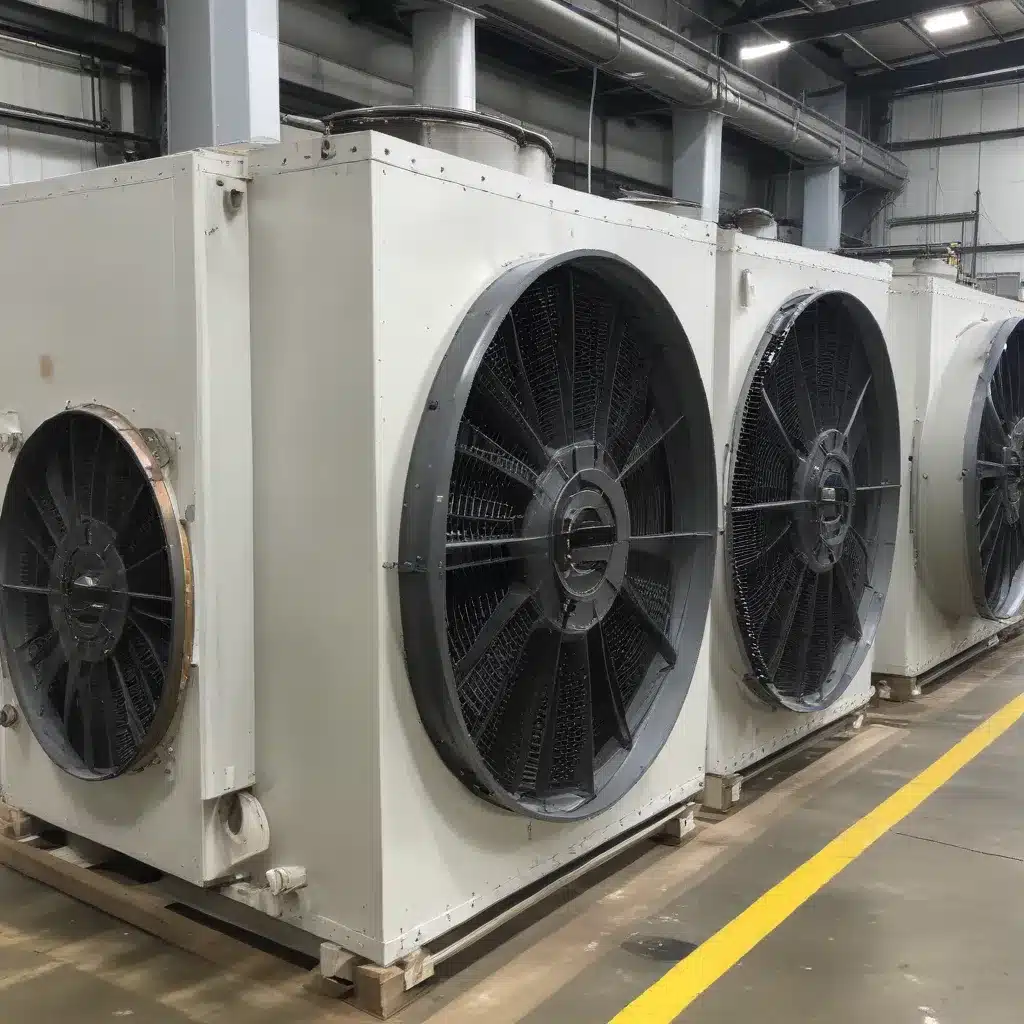
Understanding the Importance of Efficient Air-Cooled Heat Exchangers
Air-cooled heat exchangers are essential components in a wide range of industries, from HVAC systems to petrochemical plants. These versatile devices play a crucial role in transferring thermal energy, ensuring optimal performance and energy efficiency in various applications. As the demand for sustainable and cost-effective thermal management solutions continues to rise, it’s essential to explore cutting-edge techniques for improving the efficiency and longevity of air-cooled heat exchangers.
Factors Influencing Air-Cooled Heat Exchanger Performance
The performance of an air-cooled heat exchanger is determined by a complex interplay of factors, including design, materials, and operating conditions. Factors such as airflow, heat transfer coefficients, and fouling can significantly impact the overall efficiency of the system. By understanding and addressing these factors, engineers and maintenance professionals can unlock the true potential of air-cooled heat exchangers, maximizing their performance and longevity.
Enhancing Air-Cooled Heat Exchanger Efficiency
Optimizing Airflow and Heat Transfer
One of the key strategies for improving the efficiency of air-cooled heat exchangers is to optimize airflow and heat transfer. This can be achieved through a combination of innovative design techniques and advanced materials.
Innovative fin designs, such as Alfa Laval’s finned tube air heat exchangers, can enhance air turbulence and improve heat transfer rates. By strategically shaping the fins and optimizing their spacing, engineers can create more efficient air-to-fluid heat exchange, leading to better overall performance.
Additionally, the use of advanced materials with higher thermal conductivity, such as aluminum or copper, can significantly enhance the heat transfer capabilities of the exchanger. These materials facilitate more efficient conduction of heat, allowing for faster and more effective cooling of the target fluid.
Minimizing Fouling and Maintaining Cleanliness
Fouling, the accumulation of deposits on the heat exchanger’s surfaces, is a common challenge that can severely impact its efficiency. To address this issue, AMETEK Hughes-Treitler’s rotary cooling solutions incorporate innovative scraped surface designs that help prevent fouling and maintain optimal heat transfer capabilities.
Regularly scheduled maintenance and cleaning procedures are also crucial for maintaining the efficiency of air-cooled heat exchangers. This can include tasks such as:
- Inspecting and cleaning the heat exchanger fins to remove debris and buildup
- Checking for any damage or deterioration of the heat exchanger components
- Ensuring proper airflow by addressing any obstructions or blockages
By prioritizing fouling prevention and regular maintenance, organizations can ensure their air-cooled heat exchangers operate at peak efficiency, reducing energy consumption and maintenance costs.
Leveraging Advanced Control Systems
The integration of advanced control systems can significantly enhance the performance and efficiency of air-cooled heat exchangers. These systems can monitor and adjust various operating parameters, such as fan speed, airflow, and temperature, to optimize the heat transfer process.
RIGID’s innovative compressor cooling solutions demonstrate the potential of advanced control systems. By utilizing cutting-edge thermal management technologies and customized refrigeration solutions, RIGID is able to provide highly efficient and reliable compressor cooling systems that can significantly improve the overall performance of air-cooled heat exchangers.
Ensuring Long-Term Reliability and Durability
Proactive Maintenance and Preventive Measures
Maintaining the long-term reliability and durability of air-cooled heat exchangers requires a proactive approach to maintenance and preventive measures. This includes:
- Regularly scheduled inspections to identify potential issues before they escalate
- Timely replacement of worn or damaged components, such as fans, motors, or heat exchanger cores
- Implementing predictive maintenance strategies using data analytics and machine learning to forecast maintenance needs
By adopting a comprehensive maintenance program, organizations can extend the lifespan of their air-cooled heat exchangers, minimizing unplanned downtime and reducing long-term operational costs.
Selecting Durable Materials and Design
The choice of materials and design features can also play a significant role in the longevity of air-cooled heat exchangers. Alfa Laval’s robust and versatile heat exchanger solutions are designed with durability and reliability in mind, incorporating high-quality materials and advanced manufacturing techniques.
For example, the use of corrosion-resistant materials, such as stainless steel or coated aluminum, can enhance the exchanger’s resistance to environmental factors, ensuring long-term performance in demanding industrial settings.
Customizing Air-Cooled Heat Exchanger Solutions
Addressing Unique Application Requirements
One-size-fits-all solutions often fall short when it comes to air-cooled heat exchangers, as each application has its own unique requirements and constraints. That’s where customized solutions come into play.
RIGID’s expertise in custom-made refrigeration solutions allows the company to develop air-cooled heat exchanger systems tailored to the specific needs of its clients. By understanding the unique challenges and requirements of each application, RIGID can engineer solutions that optimize performance, efficiency, and reliability.
Incorporating Innovative Technologies
The air-cooled heat exchanger market is constantly evolving, with new technologies and innovations emerging to address the ever-changing demands of various industries. By staying at the forefront of these developments, organizations can gain a competitive edge and ensure their heat exchanger systems remain cutting-edge.
For instance, the incorporation of variable speed fans and advanced control systems can enable fine-tuned adjustments to airflow and temperature, further enhancing the efficiency and responsiveness of air-cooled heat exchangers.
Conclusion: Unlocking the Full Potential of Air-Cooled Heat Exchangers
In the quest for sustainable, cost-effective, and reliable thermal management solutions, air-cooled heat exchangers stand as a versatile and essential technology. By implementing cutting-edge techniques for improving efficiency and longevity, organizations can unlock the full potential of these vital components, driving innovation and optimizing performance across a wide range of industries.
Through a combination of innovative design, advanced materials, effective maintenance practices, and customized solutions, air-cooled heat exchangers can be transformed into high-performance, energy-efficient, and long-lasting assets that contribute to the overall success and sustainability of any operation.
By staying informed and embracing the latest advancements in air-cooled heat exchanger technology, industry professionals can position their organizations for long-term success, maintaining a competitive edge and delivering exceptional results.

